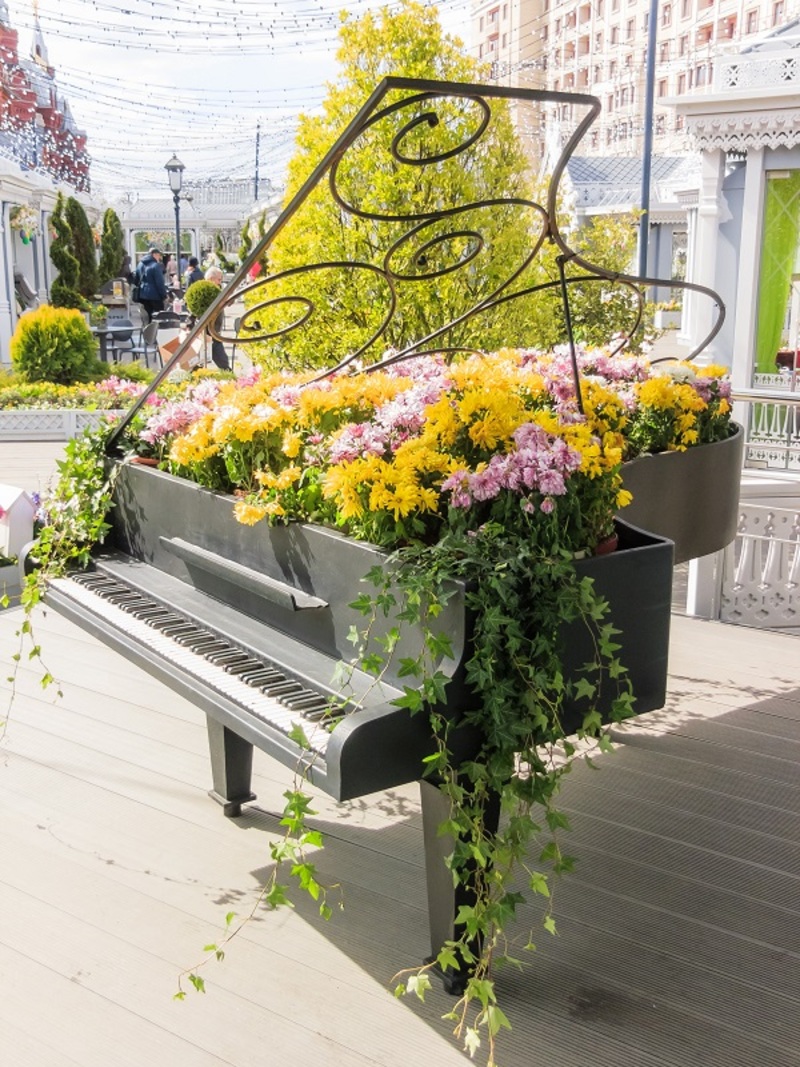Unveiling the mysteries: Surprising truths about tulips
Posted on 07/09/2025
Unveiling the Mysteries: Surprising Truths About Tulips
Few blossoms capture the imagination and ignite a sense of wonder quite like the tulip. With their vibrant hues, elegant shapes, and storied history, tulips have enchanted gardeners, artists, and admirers across continents. But beyond their well-known beauty, what fascinating secrets do tulips hold? Join us on a journey as we delve into the lesser-known facts, surprising origins, and scientific marvels of this magnificent flower in our comprehensive guide: Unveiling the Mysteries: Surprising Truths About Tulips.
1. The Origins of Tulips: More Than Just a Dutch Delight
When most people think of tulips, visions of sprawling Dutch tulip fields immediately spring to mind. However, the tulip's story began far from the iconic windmills of the Netherlands.
The Wild Tulip's Ancestral Home
- Tulips originated in Central Asia, particularly in regions that are now modern-day Kazakhstan, Uzbekistan, and parts of Turkey.
- The natural habitat for wild tulips was the harsh, mountainous steppe, where they adapted to survive both drought and cold.
- It wasn't until the 16th century that tulips made their way to Western Europe, accompanying diplomatic envoys and traders.
The word "tulip" is derived from the Persian word "dulband", meaning turban, inspired by the flower's rounded, wrapped petals.
How Did Tulips Become Synonymous with the Netherlands?
- Tulip bulbs were introduced to Western Europe in the late 1500s by Carolus Clusius, a renowned botanist at Leiden University.
- The unique flower quickly became a status symbol, coveted by aristocrats, merchants, and flower enthusiasts.
- Within a few decades, the Netherlands had become the global center of tulip cultivation and breeding.

2. The Science Behind the Colors: What Makes Tulips So Vibrant?
Tulips are beloved for their bold **rainbow of colors**, ranging from snow-white to nearly black. But what's behind this extraordinary spectrum?
The Magic of Pigments: Anthocyanins and Beyond
- Anthocyanins: Responsible for red, purple, and blue hues found in tulip petals.
- Carotenoids: Create dazzling yellows and oranges.
- Mixed pigments: When these compounds intermingle, they produce tulips with stripes, flames, and intricate patterns.
Interestingly, true blue tulips have yet to be cultivated. While breeders have tried for centuries, the genetic makeup of tulips simply doesn't allow for a natural pure blue hue — a mystery that continues to intrigue growers.
3. The Tulip Mania: History's First Economic Bubble
Perhaps the most dramatic episode in tulip history is the phenomenon known as Tulip Mania. This 17th-century craze for rare tulip bulbs left an indelible mark on economics — and culture.
What Exactly Happened During Tulip Mania?
- Peak Craze (1634-1637): The demand for unique tulip varieties sent bulb prices soaring. Single bulbs sometimes traded for the price of a house!
- Speculation and Ruin: Merchants, nobility, and commoners alike traded tulip futures, betting on price increases. When the bubble popped, fortunes were lost overnight.
- Lasting Impact: Tulip Mania is often cited as the first recorded speculative bubble, a cautionary tale about the dangers of market frenzy.
Why Were "Broken" Tulips So Coveted?
"Broken" tulips were those with spectacular color variegations — stripes and flames — prized above all others. The cause? A mosaic virus that altered pigment distribution, creating unique and unpredictable patterns.
- Today, virus-induced "broken" tulips are avoided to protect healthy crops. However, similar patterns are now recreated safely through selective breeding.
4. Tulip Varieties: An Astonishing Diversity
There are more than 3,000 registered tulip varieties, grouped into over 15 divisions. Each has its own unique form, color, and blooming season.
Some Popular Tulip Types
- Single Early Tulips: Sturdy, classic tulips that bloom early in spring.
- Double Late Tulips (Peony Tulips): Lush, multi-petaled tulips resembling peonies.
- Fringed Tulips: Petals edged with delicate "fringes" for dramatic texture.
- Parrot Tulips: Wildly ruffled, multicolored blooms that look like exotic birds.
- Viridiflora Tulips: Distinct with green streaks on their petals.
Tulips come in virtually every shade except blue, and even near-black varieties (like 'Queen of Night') exist. From subtle pastels to dazzling neon shades, there's a tulip for every preference.
5. The Secret Life Cycle of a Tulip
The transformation of a tulip from a modest bulb to a breathtaking bloom is a botanical marvel, often misunderstood by even seasoned gardeners.
From Bulb to Blossom: Step-by-Step
- In autumn, tulip bulbs are planted deep in the soil. Underground, a miracle begins as the bulb establishes roots.
- Over winter, the cold period triggers hormones necessary for future flowering. This chilling, or vernalization, is essential.
- As temperatures rise in spring, shoots emerge, drawing energy stored in the bulb.
- Blooming occurs for just a few short weeks, after which petals fall and leaves die back, but the bulb below ground remains alive, using sunshine to store energy for next year.
Why Do Tulips "Fade Out" After a Few Years?
- Many modern hybrid tulips are bred for spectacular displays, not longevity. Over time, garden-cultivated tulips may produce fewer flowers.
- Species tulips, closer to their wild ancestors, are more likely to naturalize and return year after year.
6. Ecological Contributions: More Than a Beautiful Face
While tulips are prized for their beauty, their ecological role is often overlooked.
- Tulips are early spring bloomers, providing nectar and pollen for pollinators emerging from winter hibernation.
- Some wild tulip species are vital to specific insects and play a role in regional biodiversity.
- Protecting native tulip habitats is crucial for preventing the extinction of unique species.
7. Tulips in Art, Culture, and Symbolism
The tulip has left an indelible mark on art, literature, and culture worldwide. Its meanings have evolved through history and across societies.
Symbolism of the Tulip
- In the Ottoman Empire, the tulip symbolized perfection, abundance, and paradise.
- Among Victorians, tulips represented declarations of love and charity.
- In modern times, the red tulip is associated with true love, while yellow tulips often denote cheerful thoughts.
Famous paintings by Dutch masters feature tulips front and center, immortalizing their fleeting beauty in oils and watercolors. Every spring, cities like Amsterdam and Istanbul celebrate with grand tulip festivals, honoring the flower's profound legacy.
8. Tulips Around the World: Not Just a European Obsession
While the Netherlands is world-renowned for its tulip extravaganzas, tulips are grown and celebrated worldwide, with each region adding its own twist.
- Turkey: Istanbul's annual Tulip Festival showcases millions of blooms, highlighting the flower's Ottoman heritage.
- Iran: Home to several wild species, tulips are a symbol of national pride and martyrdom.
- United States: States like Washington and Michigan host massive tulip festivals each spring, drawing crowds from across the country.
9. Tulip-Care Guide: Growing Your Own Piece of History
For those inspired to cultivate their own tulip garden, here are some essential tips to ensure dazzling blooms year after year.
Planting Tips for Healthy Tulips
- Choose the Right Bulbs: Select firm, healthy bulbs free of mold or soft spots.
- Plant in Fall: Bulbs need a cold winter period. Plant 6-8 inches deep, pointed end up, before your region's first hard frost.
- Well-Draining Soil: Soggy conditions cause bulbs to rot. If soil is heavy clay, amend with sand or compost.
- Full Sun: Tulips perform best in spots that receive at least 6 hours of sunlight daily.
- Water Once After Planting: Then let nature take its course; supplemental watering is rarely needed over winter.
- Allow Leaves to Die Back Naturally: This helps the bulb store energy for next season.
Common Challenges & How to Prevent Them
- Pests: Squirrels and voles love tulip bulbs. Use wire mesh or plant bulbs in pots.
- Diseases: Watch for signs of mosaic virus and fungal rot. Remove and dispose of infected plants promptly.
- Short Bloom Lifespan: Mix early, mid, and late-blooming varieties for continuous color throughout spring.

10. Surprising Truths About Tulips: Fast Facts
- Tulip petals are edible and were used as a famine food during World War II. (Modern tulips should be eaten cautiously, as some bulbs can cause digestive upset.)
- "Tulip Fever" is a real phenomenon--referring not only to economic bubbles but also to the enduring obsession with these flowers over generations.
- Cut tulips continue to grow in the vase, sometimes adding an inch or more after being picked.
- Netherlands exports billions of tulip bulbs each year, making it the world's top tulip producer by a considerable margin.
- Awards and competitions exist for tulip design, including new color breakthroughs and dramatic patterns.
Conclusion: The Everlasting Allure of Tulips
From the windswept steppes of Central Asia to the manicured fields of Holland and beyond, tulips remain a symbol of timeless beauty, human ingenuity, and nature's surprises. Their history is filled with intrigue—from royal courts to economic bubbles, from scientific breakthroughs to artistic inspiration.
Whether you're an experienced gardener, a history buff, or simply an admirer of nature's wonders, learning the surprising truths about tulips enriches your appreciation of this remarkable bloom.
So, the next time you marvel at a tulip bursting into color each spring, remember: behind its vibrant petals lies a story as layered and fascinating as the flower itself.
Ready to discover more? Consider planting your own tulip bulbs this year, or plan a visit to a famous tulip festival. The mysteries and marvels of tulips are waiting to unfold before your eyes.
Latest Posts
Unveiling the mysteries: Surprising truths about tulips
Exploring the Rich Symbolism of Peony Flowers and Their Color Significance
Easy-Care Office Plants for a Greener Workspace







